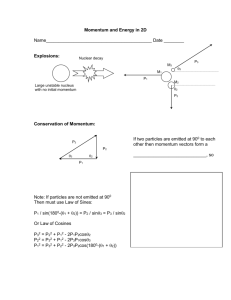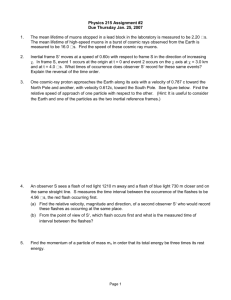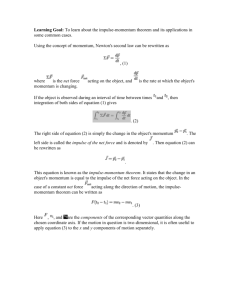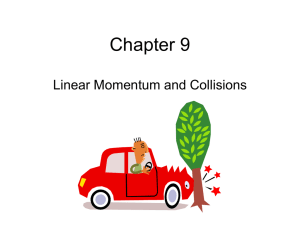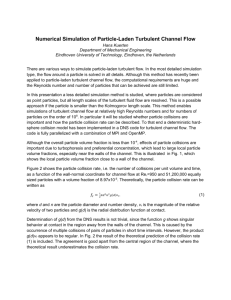Momentum and Energy in 2D
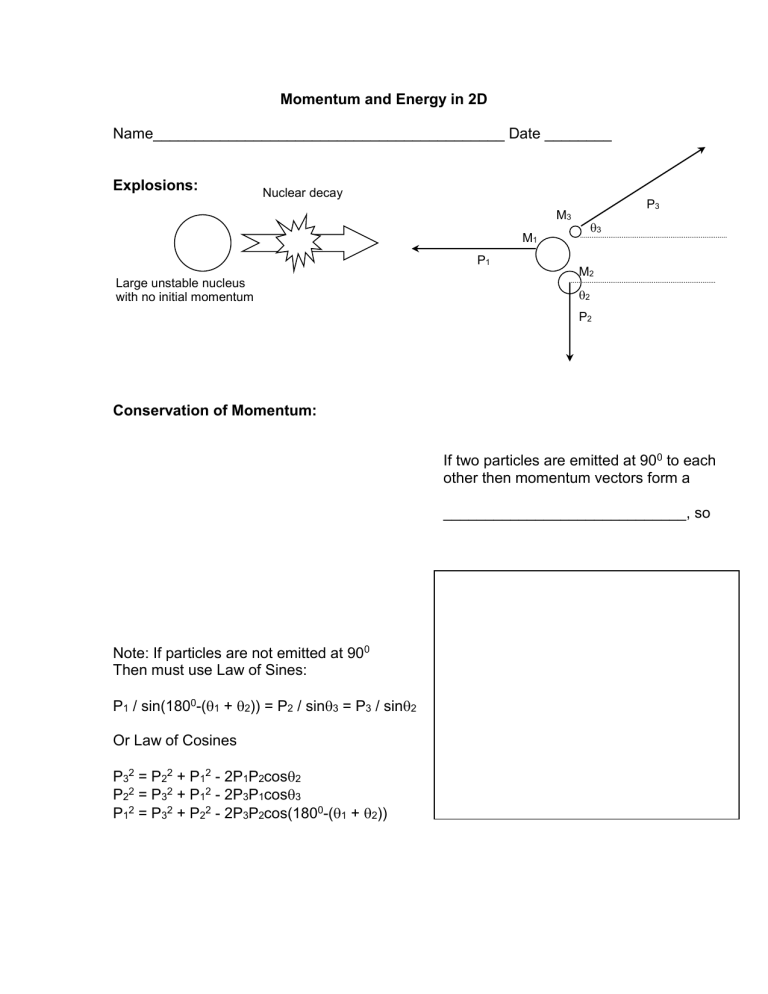
Momentum and Energy in 2D
Name__________________________________________ Date ________
Explosions:
Nuclear decay
M
1
M
3
3
Large unstable nucleus with no initial momentum
P
1
M
2
2
P
2
Conservation of Momentum:
Note: If particles are not emitted at 90 0
Then must use Law of Sines:
P
1
/ sin(180 0 -(
1
+
2
)) = P
2
/ sin
3
= P
3
/ sin
2
Or Law of Cosines
P
3
2 = P
2
2 + P
1
2 - 2P
1
P
2 cos
2
P
2
2 = P
3
2 + P
1
2 - 2P
3
P
1 cos
3
P
1
2 = P
3
2 + P
2
2 - 2P
3
P
2 cos(180 0 -(
1
+
2
))
P
3
If two particles are emitted at 90 0 to each other then momentum vectors form a
_____________________________, so
Collisions:
M
1
V
1i
Conservation of Momentum:
M
2
2
V
2f
V
1f
1 so,
If the collision is elastic, the target particle is initially stationary and the masses of the colliding particles are the same, as in the game of pool: m
1
= m
2
= m
1/2m
1 v
1i
2 = 1/2m
1 v
1f
2 + 1/2m
2 v
2f
2
Velocity vectors must form a _____________
_____________________________________
According to the ________________________
_____________________________________
Examples:
An unstable nucleus of mass 17 x 10 -27 kg, initially at rest, disintegrates into three particles. One of the particles, of mass 5.0 x 10 -27 kg, moves along the positive yaxis with a speed of 6.0 x 10 6 m/s. Another particle of mass 8.4 x 10 -27 kg, moves along the positive x-axis with a speed of 4.0 x 10 6 m/s. Determine the third particle’s speed and direction of motion. (Assume that mass is conserved)
Write down what you know
Draw a vector diagram of the momentum
Solve for the momentum of the third particle and then find its velocity
Use trig to determine the angle relative to the positive x-direction (going counter clockwise)
A particle with a speed v
1
= 2.64 x 10 6 m/s makes a glancing elastic collision with another particle that is at rest. Both particles have the same mass. After the collision the struck particle moves off at 10 0 to v
1
. What is the speed of each particle after the collision and what angle is the incident particle scattered at?
Write down what you know
Draw a vector diagram of the situation (note: masses are the same so can use velocity vectors rather than momentum)
Use trig to determine the speed of each particle after the collision
Determine the scattering angle of the incident particle using geometry

